If any animal species has the world of science scratching its head over, it’s the eel. This species of animal remains one of nature’s greatest mysteries, as little is known about them and how they live.
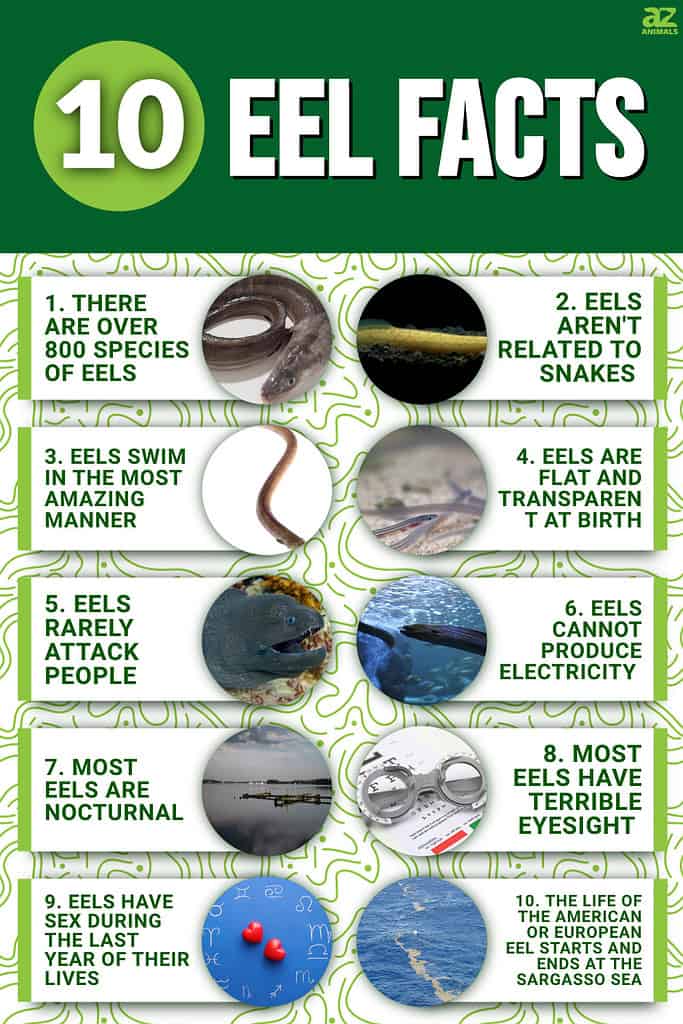
While we await new discoveries from scientists about eels, find below ten incredible eel facts for you.
1. There Are Over 800 Species Of Eels
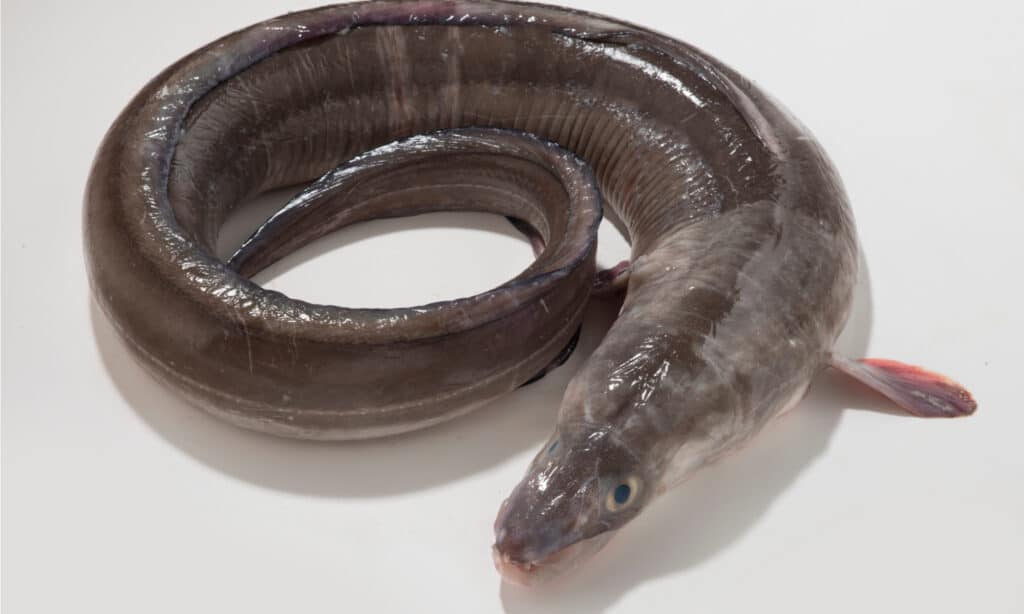
Over 800 species of eels exist.
©JoaoSilvaB/Shutterstock.com
When eels are mentioned, people often think there is only one type of eel. This is far from reality as over 800 species of eels exist. Interestingly, these 800 species are further grouped into eight suborders, 19 families, and 111 genera. These different species of eels are scattered in different climes of the world. However, moray eels are the exception as they can be found almost everywhere/worldwide.
2. Eels Aren’t Related To Snakes
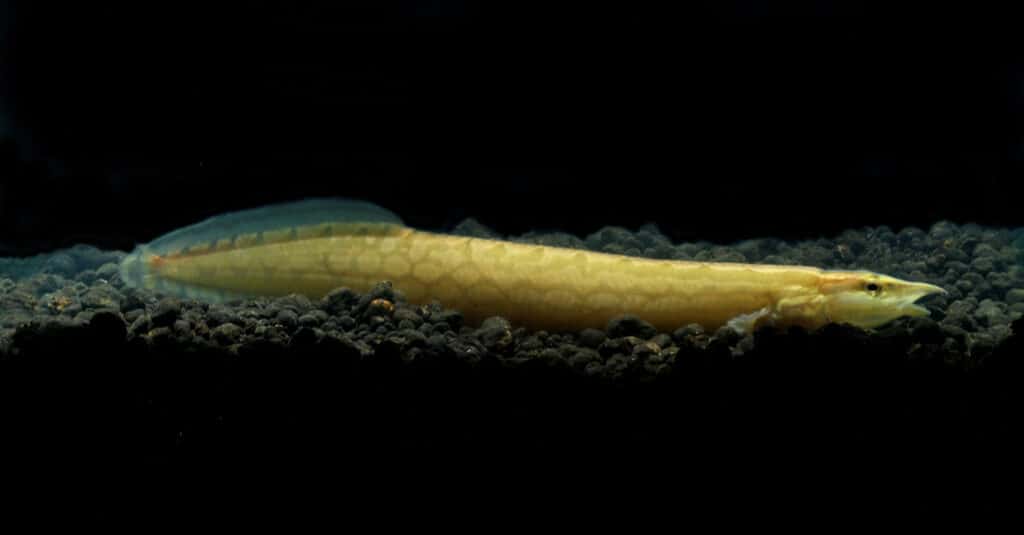
Snakes and eels are unrelated.
©1226189398/Shutterstock.com
Forget the uncanny resemblance between snakes and eels, as there is nothing between them. While it’s true that one of the first lessons in evolution is to check for similarities in both species involved, it doesn’t work in this case. Eels are fishes that have evolved to survive in crevices, holes, and small spaces. Snakes, however, are snakes: they have scales on their bodies which is absent in almost every eel species.
Eels also have fins and gills, which are peculiar to fishes. An eel cannot live outside water, just like most snakes cannot live in water, apart from a few like the water snakes. So, both creatures are entirely different.
3. Eels Swim In The Most Amazing Manner
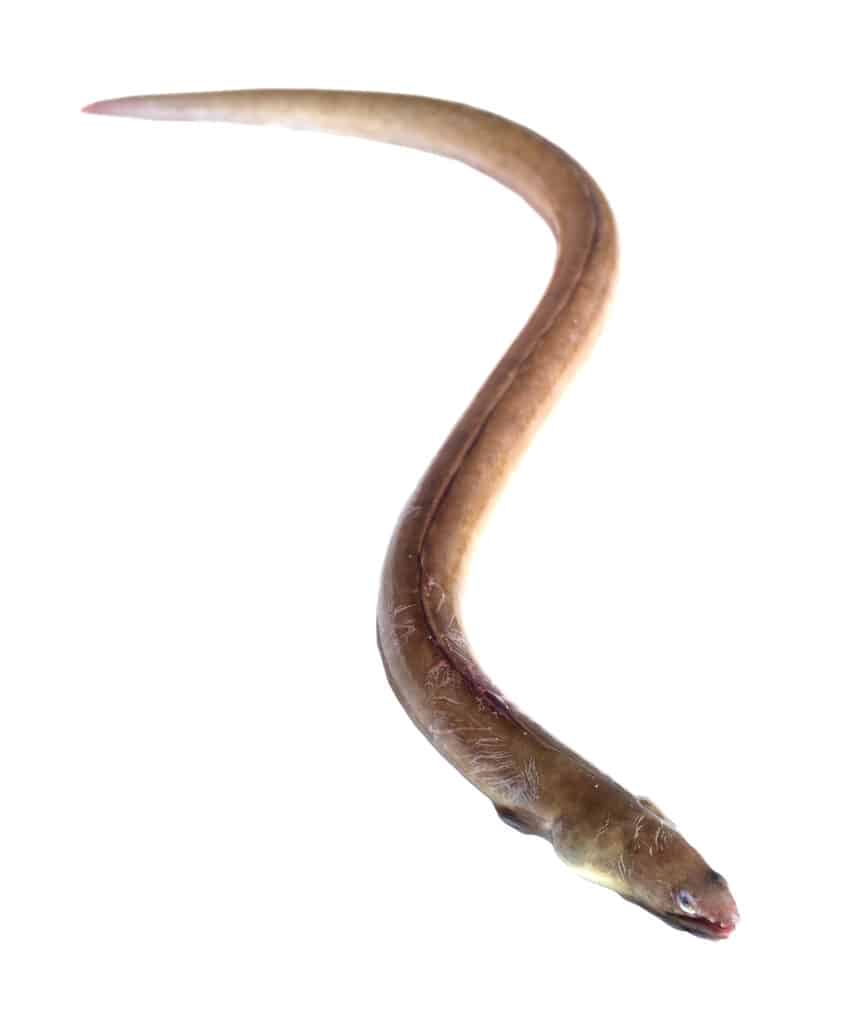
Eels’ bodies undulate through the water.
©IrinaK/Shutterstock.com
It is no news to even a child that fishes swim. And since eels are fishes, they automatically navigate their habitat in the unique way common to fish. What’s fascinating, however, is how they swim. Since they have no caudal fins, eels move about in the water through undulation, which involves moving their whole body like a rolling wave.
This method of movement is similar to the moving pattern of the snake. However, eels involve their anal and dorsal fins by elongating them along their bodies to help them stabilize in the water as they swim. If that was amazing, here’s more: eels can swim backward. They do this by reversing the direction of the wave they create with their bodies.
4. Eels Are Flat And Transparent At Birth

Eels go through different stages as they develop and grow older.
©jack perks/Shutterstock.com
Many animals are minute when born, but the eel is not satisfied with being dismissible: it prefers oblivion. Eels are flat and transparent when they are born. These little ones are called leptocephalus, the Greek word for flat head. Until now, there are still many mysteries surrounding the birth of baby eels and how they mature. These baby eels are very different from adult ones, making them difficult to track. Baby eels start life in larvae form, from which they move to be glass eels and then to elvers. When they become elvers, they seek out their juvenile or adult habitat.
5. Eels Rarely Attack People
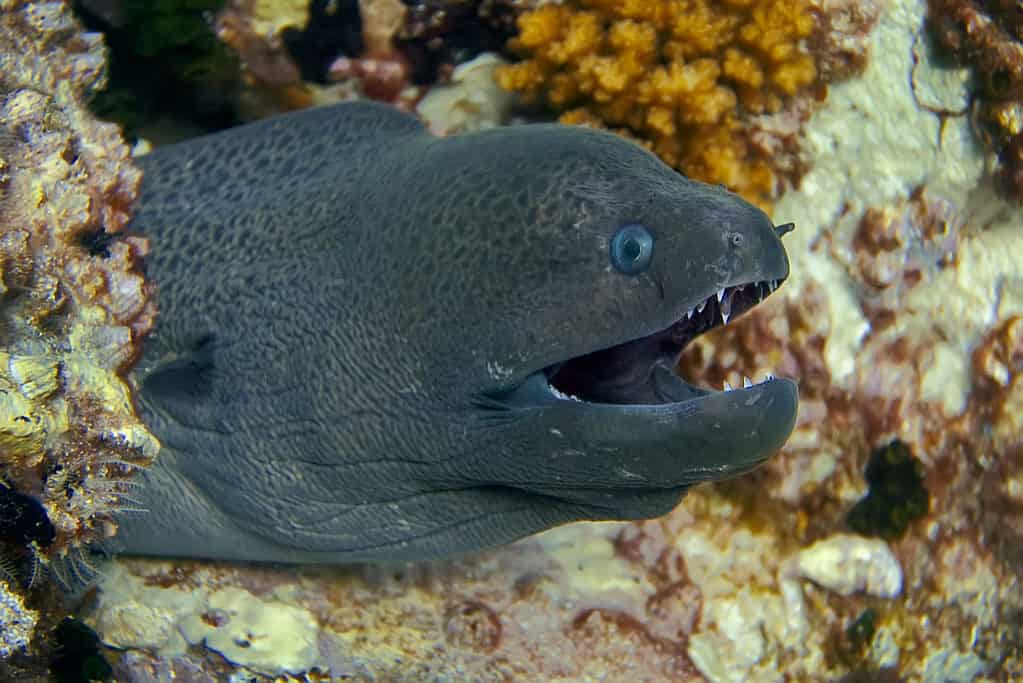
Eels do not usually bite humans.
©Aleksei Alekhin/Shutterstock.com
Although eels look frightening with their snake-like body and large teeth, they are not known to attack people. The only possibility of eels attacking people occurs when they feel extremely threatened or if you encroach into their habitats. While eels don’t usually bite, it’s not a great idea to be bitten by one as it can lead to loss of body parts or limbs.
6. Eels Cannot Produce Electricity
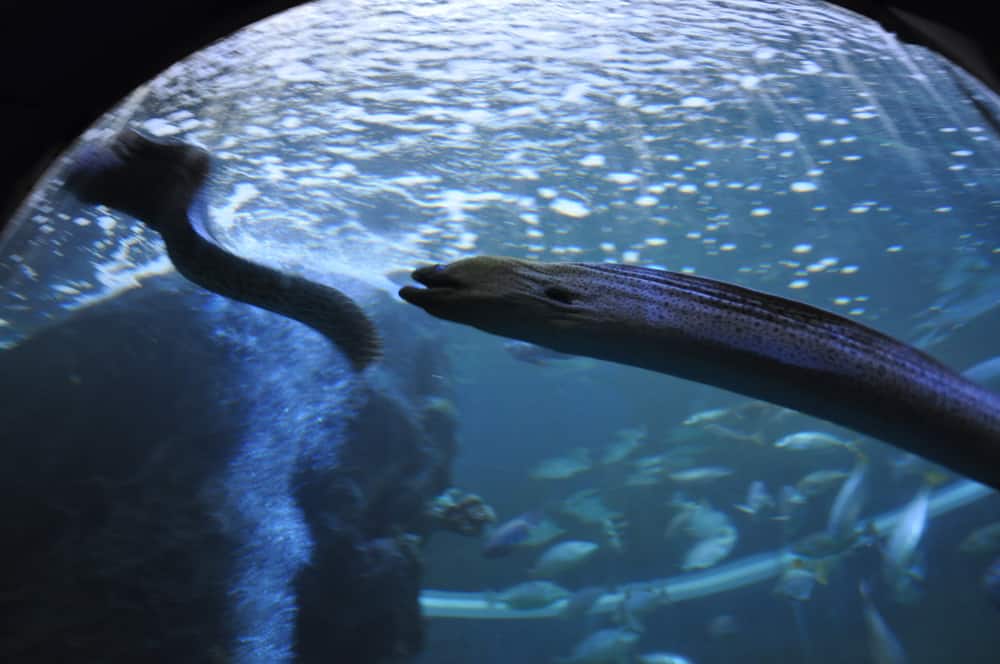
Electric eels are not true eels.
©Cattleya2017/Shutterstock.com
When people talk about eels, all they have in mind is a giant sea animal that can produce almost 500 volts of electric current. First, the animal referred to here is an electric eel. Secondly, it is not an eel, but a knife fish found mainly in bodies of fresh water in South America. Although it looks similar to the eel, its scientific classification is closer to that of the carp and catfish. The electric eel is a false eel, not part of the eel species. As a fact, no true eel can produce an electric current.
7. Most Eels are Nocturnal

Eels generally are only active at night.
©RogerDownes/Shutterstock.com
Most eels are nocturnal animals, meaning they operate more during the nighttime. This is one of the reasons why it is a lot of work to track and study them, as they are rarely seen.
8. Most Eels Have Terrible Eyesight

Eels rely on other senses than their eyes to find their prey.
©iStock.com/Komthong Wongsangiam
Most nocturnal animals, like cats and wolves, usually have the characteristics of nightlife, one of which is excellent eyesight. The eel, however, fails in this regard as it has poor eyesight. Their vision is so poor that there have been cases of eels biting off the fingers of those who tried to feed them.
9. Eels Have Sex During The Last Year of Their Lives

Eels wait until the end to make a move.
©Pixel-Shot/Shutterstock.com
Whatever the reason for this, eels wait till the last year of their lives to have sex. While scientists have not unraveled the reason for this behavior, attempts are being made to study the sexual behavior of these weird fish species that only go to breed when it’s ready to die.
10. The Life of the American or European Eel Starts and Ends at the Sargasso Sea

The Sargasso Sea is the fifth largest sea in the world.
©Ocean Explorer/NOAA / Public Domain – License
If this fact were deemed sacred, it would not be far from the truth. The life of all eels starts and ends at the Sargasso Sea, the only sea in the world without a land boundary. It is located entirely within the Atlantic Ocean and where the life and death of all eels seem to happen. In the last year of their lives, all eels move towards the Sargasso to breed and die. This journey usually happens around October and December.
Eels can cover between 3106.85 to 6213.71 miles during this journey to the Sargasso sea. After the spawning activity, the eels that participated die, and new eels start their migration away from the Sargasso Sea to start their own lives. The cycle continues with the new eels until it reaches the climax at the same sacred spot years later.
The photo featured at the top of this post is © Jesus Cobaleda/Shutterstock.com
Thank you for reading! Have some feedback for us? Contact the AZ Animals editorial team.






